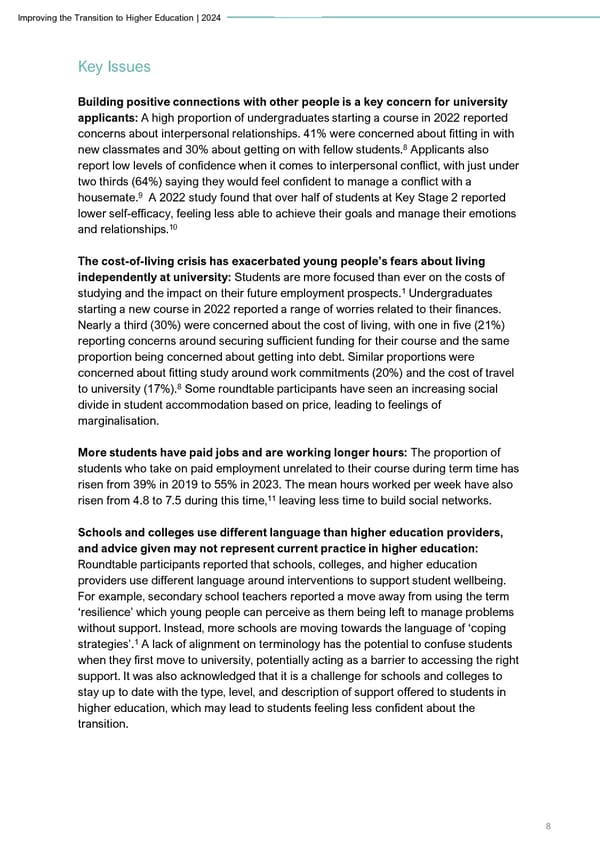Improving the Transition to Higher Education | 2024 Internal Key Issues Building positive connections with other people is a key concern for university applicants: A high proportion of undergraduates starting a course in 2022 reported concerns about interpersonal relationships. 41% were concerned about fitting in with new classmates and 30% about getting on with fellow students.8 Applicants also report low levels of confidence when it comes to interpersonal conflict, with just under two thirds (64%) saying they would feel confident to manage a conflict with a 9 housemate. A 2022 study found that over half of students at Key Stage 2 reported lower self-efficacy, feeling less able to achieve their goals and manage their emotions and relationships.10 The cost-of-living crisis has exacerbated young people9s fears about living independently at university: Students are more focused than ever on the costs of studying and the impact on their future employment prospects.1 Undergraduates starting a new course in 2022 reported a range of worries related to their finances. Nearly a third (30%) were concerned about the cost of living, with one in five (21%) reporting concerns around securing sufficient funding for their course and the same proportion being concerned about getting into debt. Similar proportions were concerned about fitting study around work commitments (20%) and the cost of travel to university (17%).8 Some roundtable participants have seen an increasing social divide in student accommodation based on price, leading to feelings of marginalisation. More students have paid jobs and are working longer hours: The proportion of students who take on paid employment unrelated to their course during term time has risen from 39% in 2019 to 55% in 2023. The mean hours worked per week have also risen from 4.8 to 7.5 during this time,11 leaving less time to build social networks. Schools and colleges use different language than higher education providers, and advice given may not represent current practice in higher education: Roundtable participants reported that schools, colleges, and higher education providers use different language around interventions to support student wellbeing. For example, secondary school teachers reported a move away from using the term 8resilience9 which young people can perceive as them being left to manage problems without support. Instead, more schools are moving towards the language of 8coping strategies9.1 A lack of alignment on terminology has the potential to confuse students when they first move to university, potentially acting as a barrier to accessing the right support. It was also acknowledged that it is a challenge for schools and colleges to stay up to date with the type, level, and description of support offered to students in higher education, which may lead to students feeling less confident about the transition. 8
 Improving the transition to Higher Education Page 7 Page 9
Improving the transition to Higher Education Page 7 Page 9